Henry VIII of England (June 28th, 1491 – January 28th, 1547) was the King of England from April 21st, 1509 until his death. He is commonly depicted as fairly tall and heavyset. Possibly, the most famous image of him is a Renaissance painting, painted by Hans Holbein the Younger. He is depicted standing tall and boisterous, dressed in a king’s attire, holding a pair of leather gloves in one hand and clutching at the string of a scabbard in the other.
It is a painting similar to this that many people seem to have a memory of. The key difference is that Henry VIII is holding a turkey leg (or drumstick) in one hand. Others seem to recall him sitting at a table (at a feast or dinner) showing just his upper torso. The memory is a usually foggy for most, but the common memory is that it is definitely a Renaissance style painting, and he is definitely holding a turkey leg. The problem is neither painting exists.
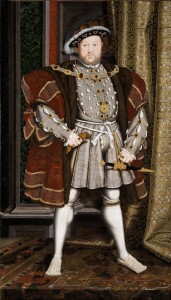
It has largely been debated online that this painting could have never existed anyway due to the turkey being brought over after Henry VIII’s death (1547), in 1550. This date has also been debated since another source claims that Henry VIII was the first King of England to eat turkey. This blog even says Henry VIII was a fan of turkey!
It’s possible that this painting could have depicted the leg of another bird, such as a chicken, swan, or peafowl, the latter two making the most sense as they were normally domesticated and reserved for the social elite. However, the leg in most people’s memory was large, like, medieval turkey leg style large, neither of which fit the swan or peafowl. Some have suggested a guineafowl may also be possible as it was referred to as a “turkey” as well but may be a bit too small for most memories. For the sake of argument, let’s change this to “Painting of Henry VIII Holding a Chicken Leg”. Unfortunately even then, there is no precedence for a commissioned painting to show a noble person eating or holding food, especially one with a giant drumstick in their hand. It just wouldn’t happen, and as evidence shows, it never did.
The first time I was made aware of this one was on The Mandela Effect website, although it has been talked about in many places as it’s easily one of the most popular Mandela Effects. The concept shows itself quite a fair number of times in popular media as well.
My Experience
After hearing about this one, my mind raced as I too recalled such a painting. The memory was foggy and seemed conflicted between several other memories of similar imagery. I think that is probably the root of this strange case as we’ll explore in the explanations.
Possible Explanations
The depiction of Henry VIII eating a turkey leg is quite common upon research. The main issue is none of the media appears to match the memory, at least not exactly. Is it possible that we are all creating false memories by combining several together in an odd Henry VIII turkey memory amalgamation?
Here are some examples in media:
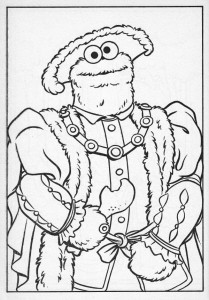
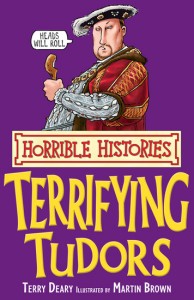
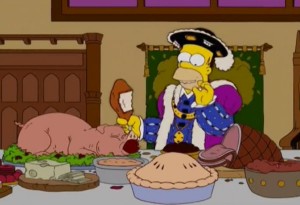
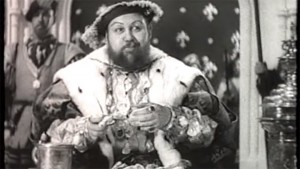
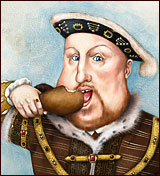
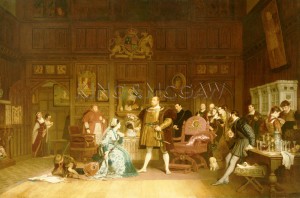
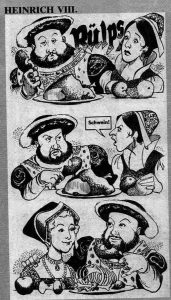
Another subconscious thing we may be doing is implanting thoughts based on our biases towards “larger” men and kings. Kings are often depicted as particularly gluttonous, always eating food in large quantities. Henry VIII was a big man and definitely did also eat a lot of food, especially later in his life. Because we may perceive him to be a king set in the medieval (or shortly thereafter) times, we just expect him to be a gluttonous king as well, maybe even stereotypically holding a big greasy turkey leg while being painted? This is possibly why it become so prevalent in media.
The painting by Hans Holbein the Younger itself can almost appear as though Henry VIII is holding some food on a quick glance if it’s a small enough picture. Especially if you don’t already know he is holding gloves. This could further the false connection for some.
Additional Links
- Have you seen this image before? (Henry VIII Turkey Leg)
- Why can no one seem to find the portrait of Henry VIII holding a turkey leg?
- Did a famous painting of Henry VIII holding a turkey leg ever exist? If not, what set the precedent for this popular depiction?
- I’m not sure, but I think I found the painting that inspired the Henry VIII w/a turkey leg Mandela Effect. via Pero Velasquez
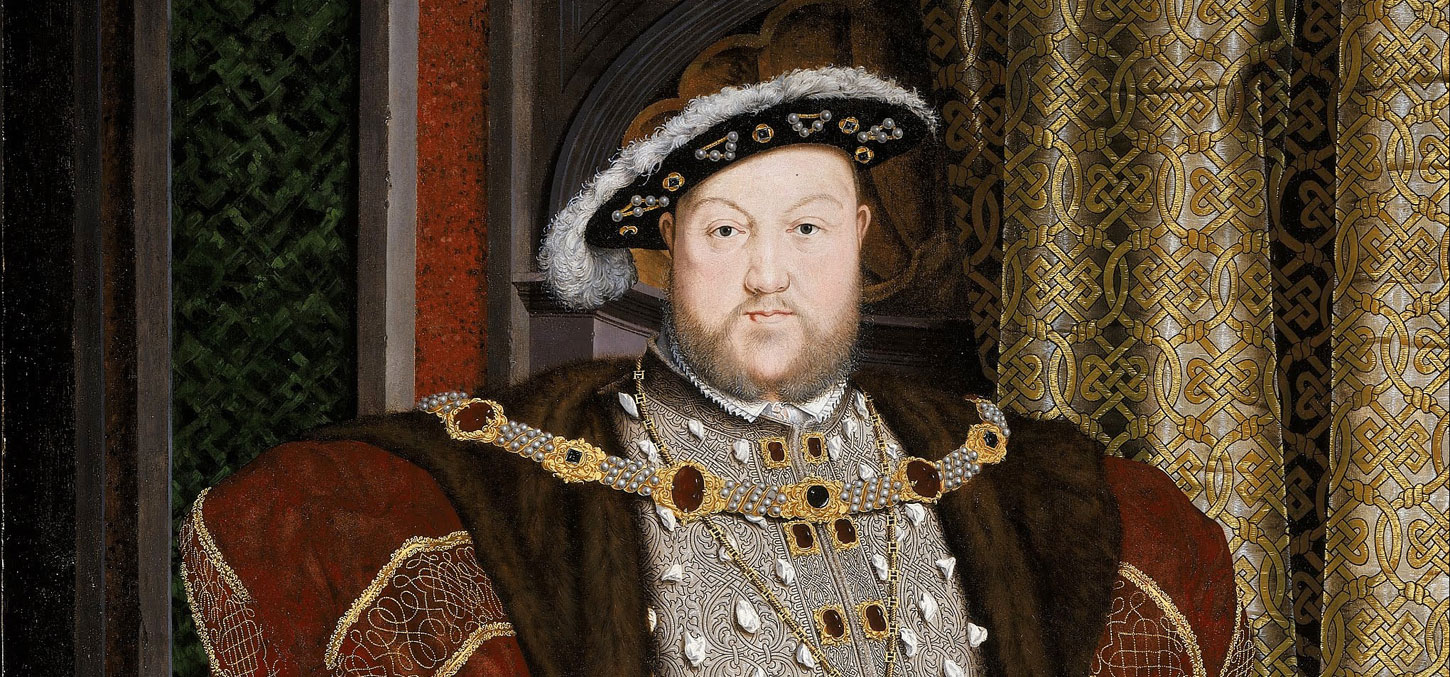
A possible source of inspiration for this memory of Henry VIII with a turkey leg may have come from an 1870 painting by Marcus Stone, seen here in this Twitter post: https://twitter.com/Pero_Velasquez/status/685299966370312192
He is holding an object (possibly fan or mirror) that when scaled down to the size the image would be if printed in a book can very easily look like a turkey leg.
Wow, FlyingOmelette.com? Now that’s a site I haven’t been to in awhile! Thanks for the reference, adding it now!
Noting that I only found out about this last night, so I am still in the throes of being driven crazy, the argument about England not having turkeys only makes it worse for me. I really sat and thought about this before I started digging, and I had a middle school teacher who had a very love-hate relationship with this painting. And I have never in my life wished so much that I had paid more attention in class than I do right now, but it was not a turkey leg – that was a common misconception, and I forget what kind of bird and where from, but that was a pet peeve of his. And if my nonexistent memory serves, it was a painting that Henry the VIII sat for, and there was some old-fashioned photo shopping that he insisted on when it was being done that created some inaccuracies. There was also something about the food and the eating that made it an unusual painting for the day, and there was some political point in there. My major take away from the discussion was that he was even more of a disgusting little mole rat than I thought. This is maddening, and I know all of that is very vague, but I’m a 40 something pulling out a memory from a middle school class. That little actually feels like a lot.
your a NEEEEEKKKKKKK
!!!!!!!!!!!!!!!!!!!!!!!!!!!!!!!!!!!!!!!!!!!!!!!!!!!!!!!!!!!!!!!!!!!!!!!!!!!!!!!!!!!!!!!!!!!!!!!!!!!!!!!!!!!!!!!!!!!!!!!!!!!!!!!!!!!!!!!!!!!!!!!!!!!!!!!!!!!!!!!!!!!!!!!!!!!!!!!!!!!!!!!!!!!!!!!!!!!!!!!!!!!!!!!!!!!!!!!!!!!!!!!!!!!!!!!!!!!!!!!!!!!!!!!!!!!!!!!!!!!!!!!!!!!!!!!!!!!!!!!!!!!!!!!!!!!!!!!!!!!!!!!!!!!!!!!!!!!!!!!!!!!!!!!!!!!!!!!!!!!!!!!!!!!!!!!!!!!!!!!!!!!!!!!!!!!!!!!!!!!!!!!!!!!!!!!!!!!!!!!!!!!!!!!!!!!!!!!!!!!!!!!!!!!!!!!!!!!!!!!!!!!!!!!!!!!!!!!!!!!!!!!!!!!!!!!!!!!!!!!!!!!!!!!!!!!!!!!!!!!!!!!!!!!!!!!!!!!!!!!!!!!!!!!!!!!
No you are in error he was most DEFINITELY holding a TURKEY LEG this is the MASONIC LUCIFERIANS head game to confuse and dumb down the masses may work on the insecure weak minded sheep but not on this coyote no sir indeed here is what they want to hear so I give it to you a key it’s a simple quote from a rather large and famous movie ” YOUR MIND TRICKS WILL NOT WORK ON ME BOY ” now MOVE ALONG MOVE ALONG and inform your Brethren so shall it be………9
The lower half of this painting was destroyed and repainted….
Many interpretations of it have been redone over the years. There’s nothing for you to “remember”. All you are “remembering” is what other people have drawn as their guess as to what the bottom of the original painting may have looked like.
What a dumb comment.. was it repainted in the last decade? No.. go back to sleep…
Here it is, from Mad Magazine (by Bob Clarke and Paul Peter Porges): http://imgur.com/7Ns8XOo
Thanks for sharing, I’ll add it to the list.
No I clearly remember it. It was a painting in color he was sitting at a table his right hand had a drumstick with a bite out of it and his left hand was holding a off white cloth. He had a smile and a yellow and Brown outfit and matching hat.
You would think there wouldn’t be so many references in pop culture to a painting that didn’t exist….
Inception. If the painting existed in a previous timeline but not in this one there would be no past references. It is more likely that the mandela effect is the result of a psyop experiment akin to mkultra where thoughts were implanted into our subconscious subliminally throughout the decades using media and then triggered to create a mass confabulation in groups mainly associated with conspiracy theories to discredit any and all factual conspiracy theories that may have been expressed.
In addition to the turkey leg, I assume that distinctive hat is definitely there? The one that’s in all the images above, except the 1870 painting.
These are all examples of references to the The Private Live of Henry VIII, and Charles Laughton’s costume and props in that scene in particular. The film was a commercial and a critical success – Laughton won the 1933 Academy Award for Best Actor for his performance, the first non-Hollywood act to do so.
Given the movie’s impact on 20th century references to Henry VIII, I’d imagine this is the material that’s being remembered.
I have the same belief. I am betting many people have seen the movie and take the scene and put it into the portrait.
I’m almost certain that the turkey leg thing was from a Monty Python animation. I’m thinking that it’s from The Life of Brian, but it could be one of their other movies.
The Mandella effect is just that, a Mandella.
A network of people organized around a core of
something to blame.
If one person in a hundred is mistaken about a
thing it’s no big deal. That’s two in two hundred,
three in three hundred and so on.
Multiply that times the billion people on the internet
and the number is now substantial,and they are all
talking to each other, toward the end, of fortifying
doubt, not certainty.
Factor in the number of people that make up stories
because they want to belong to something for whatever
reason and the number of people in agreement grows.
Factor in the number of people making stuff up just
to jerk people’s chain and the group is even larger.
Did the droid have a silver leg? Honestly, I wasn’t
paying that much attention to that detail.
Froot loops has been spelled that way for as long
as I can remember, but over a twenty year period
the spelling on lots of things change. It’s the nature
of the beast.
You were not paying close attention the first time around
and neither were the 200,000 other people you are discussing
this with. Your doubt about one thing weakens your certainty
about others and nutcases, of which there are many, add
to the flavor of the soup. When someone says their home town
disappeared, you would normally think they were lying or
mentally damaged. But in the atmosphere of self doubt. there
is the worry, “what if it’s true?”
Seriously?
Remember where you are. This is the internet. A place where
most of what you read has a heaping helping of bullcrap.
I can understand that distinction, but I feel that this is different. We’re not discussing some minute detail that would have easily slipped by. This was an entire painting. We remember it remarkably similarly. It seems like it would have been featured in every high school history book. Why would I remember the exact same painting as Stephen describes above to the slightest detail? I don’t believe in a dimensional shift, but to brush our memories off so smugly is shitty. I have a very good memory, and I have a very inquisitive but skeptical mind. That painting existed somewhere.
To believe that is it much more likely that a parallel universe has muddled our reality, instead of accepting your memory and perception have led to you believing something that wasnt the case is a bit shitty, dont you think?
The explanation into why you may think the portrait included a Turkey leg has been suggested in this article.
I would be interested to see if bad copies of the portraits have been included in history books over the years. That could be a possible explantation.
Alternatively you may just be wrong.
Henry VIII was once a very athletic man who was no doubt proud of his looks. As time went on I believe he was more insecure about his appearance and I doubt very much in later life he would have his gluttony highlighted in a commissioned portrait by posing with a Turkey leg.
The debate over whether turkey had been introduced in England doesnt bear much weight on it either regardless of the year. He wasnt exactly lacking lucrative objects that could display wealth and power was he?
Damn dude. That’s one of the best things I’ve ever read in the comment section of a blog article.
Miguel ~ You DO realize, surely, that a haughty manner clearly intended to (using the common term in today’s jargon of transitional definitions) “marginalize” other people’s experience tends to”shut down” one’s message even when it may contain valid points of information.
Yes, this is after all is said, still only the “internet”. And I think the greater majority of those perusing it exercise careful consideration BEFORE they write their articles, create their videos and/or offer their comments. That said, of course we also see, unfortunately, the works of darkness, the which have always been rampant. But this IS still a place where one can express his or her ideas [to the ?”collective”?]. This territory innately comes with hype, mockery, warmth, shilling [‘new’ verb] (also a noun in antiquity – coinage}, challenge, agreement, ridicule, uplift, denigration, etc.
It is anyone’s guess as to percentages represented in any given venue. I for one, have never taken a course of “statistics”. I do understand your points given, nor would I want to attempt to annul them. I do NOT appreciate their being couched in condescension and disdain towards others’ personal conclusions.
I am thankful there is STILL much true empathy and compassion and generosity of heart in this world. And yes, I see it conveyed even over the internet. So I try not to “toss out the baby with the bathwater”. Be quick to listen and slow to speak.
Folks, if you’ve read this far, here is making it worth your while (I hope). I clearly recall a very “Renaissance” – flavored ( no pun intended) portrait of Henry VIII with a very large drumstick (likeliest, from a turkey) in his right hand. Most of his ‘person’ was visible. Whether he was standing or sitting at table, I cannot remember. Which artist’s rendition, I have no clue……….As to much of what is out there today, in terms of titles and logos, I simply see it as a dumbed-down version of a more classic and accurate spelling in an earlier version. I think I understand that the “Mandela effect” requires the ABSENCE OF any “earlier version” to be presently found. I cannot speak to that requirement in this particular case.
+ Miguel: You raise some fascinating concepts here. Thank you.
The Brady Bunch episode Family Effort from 1970 where Greg makes a homemade movie of the family playing Pilgrims for a School project also references the Henry the VIII turkey leg painting. When the family is later watching the movie Mrs. Brady tells Mr. Brady he looks like Henry the VIII when the scene where the family is eating the first feast with the Indians shows Mr. Brady eating a turkey leg. Starting minute 3:26 https://www.youtube.com/watch?v=ygoLKkLExAg
I was just introduced to the Mandela Effect recently and view it as much ado about nothing as Shakespeare might say.
England never had turkeys as they are indigenous to America. If the Salem witch trials could evolve over verbal mass hysteria, then are we so immune in this age of mass and dis information? AS a history buff, I have never seen a depiction of Henry VII with a turkey leg myself nor have I a memory of such.
This 1998 Fisher Price toy of Robin Hood’s “Friar Tuck” is the oldest memory I have regarding the shape of a big man holding a large Turkey leg, not quite Henry the VIII but thought the image was still relevant.
https://goo.gl/images/eZTw2g
THAT’s your “debunking”?
So nobody actually saw pictures of such a painting, but instead, they saw similar depictions (some very similar) in popular media?
Wow!!!
I have a definite memory of this painting. If no such painting never existed, WHY does the depiction of him with a bitten drumstick appear SO many times in pop culture?? I even remember an episode of The Brady Bunch where Ms. Brady mentioned that Mr. Brady looked like Henry the VIII because he was eating a drumstick. And I HATED that show, so that is a random memory that I am sure of because I was mad that I couldn’t watch something else.
In, “Cooking by Car” in an episode of Mythbuster, Alton Brown says, while eating a turkey leg, “I think Henry the 8th would be proud.”
https://youtu.be/tqABijWMlxA?t=2m31s
no no no, I remember it is the popular picture of him and YES he had a leg/drumstick. It amazes me others also recall this because my memories go back almost 30 years, in my childhood. he held a drumstick and I recall not liking he or the painting for that reason. overall he gave off an unlikable image.
it seems to me there must have been a parody image broadcast on television in the 80s or early 90s. maybe it was in a commercial on TV as a modified secondary source. as i have said before, people are seeing secondary sources more than they see the primary and I think this is possibly the reasoning behind most mandela effects. it is very possible there simply are not currently any searchable images from the very old broadcast. maybe it was in a commercial or TV show.
The painting I clearly remember was of him, sitting, you could see a table in front of him, he was visible only from the waste up and he was facing to his right, our left. The goblet was gold, and sitting in the bottom left of the image, about the same size as his head, maybe a little smaller…. the turkey leg (or whatever foul) was in his left hand (our right)… he was sitting. Every example of this Medala effect I see shows him standing, or a full body shot of him sitting? Why? It wasn’t animated and it wasn’t live-action tv, it was a colour PAINTING. Whether that painting was created 100’s of years ago, or in the 1970’s for a tv show is irrelevant… the painting, in whatever form, exists… I saw it, and I know the difference between imagination and reality. It probably was a parody on a tv show, old school photoshop perhaps, but so what? It exists, I saw it, many others saw it, and now we just can’t find it on the internet.
I remember it well. and others have mentioned all of these traits… but whenever that topic comes up there’s an image of him standing or sitting with his family… nothing like the image we’re talking about… why always go for the painting where he’s standing up? Because it was the easiest grab on the internet… that’s why. You do a search for him and that’s the first image that comes up. No one posting an article about this went to a gallery and photographed a thing. No one opened an old book and took a scan of an image in it. No… they logged on and treated the net like it was the actual world and contained all the same information that the actual world contains… it isn’t… it does not… and that’s why the internet cannot be trusted as factual… it’s convenience based, controlled by interests, and this is the best, it’s less than 50 years old! and we all trust it! As if it were fact! We’ll hold it against 100 year old books and say Google must be right! Come on people!
I don’t think anything interdimensional is happening. I think what’s really happening here is people are mistaking the internet for real life. All of history is NOT on Google, not even remotely close to it, and many historic facts have changed… on google… yet people treat Google like the new god of information. It’s a very dangerous practice… in a few decades it’s completely feasible for someone in charge of the big machine to change the facts of history, practically, to get people to do and think what they want them to… and we’ll be fine with it, because things like this will already have us used to believing our memories are less accurate than Google. They are not.
Open a few old school encyclopedias, which still represent a bent version of the tiniest portion of what actually happened, and you’ll find a LOT of things absent or very different from Google. Historic events, now… not things like scientific facts, which change every day with new information, but places, dates, things that happened… changed… don’t take my word for it, check it out for yourself… IN REAL LIFE… log onto some website, and you’re still in the fantasy world. Get off the web and research in the real world… typed ink on paper doesn’t change with the whim of a web designer or the agenda of an oligarchy.
Kudos. This painting subject is how I stumbled across ME a week or two ago. I, indeed, saw a painting. Then I saw posts where people sketched out what they remembered and it matched the one I saw. One day, someone will find it and maybe we will learn why so many assume it was King Henry.
Well, this one is a mind freak. I visited a Renaissance festival in 1997, and that led to me vending at them, and then moved on to doing street and stage entertainment. I was awful at history, so I didn’t know much/anything about the time period. I learned all the “wrong things” festivals do, thanks to authentinazis always pointing out this or that being wrong.
Turkey legs are THE stereotypical festival food. I even knew this when I went to two Texas events when I was a kid in 1980. It wasn’t until the late 90s that someone told me about them not being found in England, and used this painting as a reference to why people must have thought that. “It was most likely a leg of lamb or some other type of meat.”
And until now, I thought I remembered a different painting where he WAS holding meat. I remember thinking I could easily understand someone thinking it was a turkey leg, since that’s what we would be familiar with in context.
But it was not this painting – that is clearly not a turkey leg.
I eventually wrote a comedy song that made fun of wrong things at renfests (“Where is the Renaissance (in the Festival)” and turkey legs was one of the things mentioned in it.
Now I need to track down my friend who first pointed out this painting to me and see what they recall.
Wild.
Update: Picture with Henry holding the Turkey leg was found in the movie Shazaam. Check it out in this youtube video. https://www.youtube.com/watch?v=tD0rchvuoMU
April Fools! Check the date it was released.
In addition to the other possible reasons given here, table scenes with people holding food or drink were very common in Renaissance paintings.
This one even shows a man holding a “drumstick”: https://upload.wikimedia.org/wikipedia/commons/d/d1/Bartholomeus_van_der_Helst%2C_Banquet_of_the_Amsterdam_Civic_Guard_in_Celebration_of_the_Peace_of_M%C3%BCnster.jpg
This may not be the exact cause of remembering incorrectly (people may not have seen that exact painting), but it does lend credence to the idea that we are creating a mix of a bunch of different things in our head by taking bits and pieces of similar stuff.
The painting likely exists in somebody’s private collection. What we remember of it, I seem to recall, came out of a grade school text book that was in circulation up until at least early 70s.
The Mandella Effect is probably be a hoax in the setup. For what purpose could it possibly be used in the future? In other words, what truth are we, at some point, supposed to deny?
Funny thing. I was just watching who wants to be a millionaire, and they had a question there asking which of the 4 was not a vegetarian. Henry 8 was of course the right answer. The guy even said “must be Henry the 8th, as he was always pictured holding up a turkey leg. “
This is the Mandela Effect that hit home for me. Why? Because I studied Tudor and Elizabethan history and art when I was younger. I am a costumer, and it is important to me to know as much about the history and context of the clothes I’m trying to recreate, so that I can make them as historically accurate as possible.
During the time that I was specializing in Tudor and Rennaisance costuming, I purchased a biography about Elizabeth 1, which also went into great detail about her father Henry VIII and his wives. There is a section in the middle of the book with black and white photos of all the famous royal portraits of the Tudors and the highest ranking noblemen of the time. I kept this book all these years because of these portraits. It was a great costume reference.
Most of the paintings are by Holbein (the artist who painted the “turkey leg” portrait) and the book even gave a history on the significance that Holbeins paintings played in Henry’s reign, in everything from seducing potential wives, to propaganda. This painting, it has been noted by art historians…or it had been when it still existed…was that Henry was holding a leg of mutton, and made to look larger than life. The actual painting had been larger than life size and was hung in a prominent location to be an imposing vision to greet guests and foreign dignitaries alike. The portrait had been commissioned later in Henry’s life after his horse riding accident left him with an ulcerated leg, and his once athletic body, became obese with inactivity. All of this info I learned from this book…a book I still own. I went looking for the photo and the commentary about the painting, and it’s gone! I’ve googled for this art history info…and nothing. It’s as if I made up this theory on my own out of thin air. But I’m no art historian. Just a nerdy kid who wanted to be really good at recreating Ren Faire costumes. Now I’m 42 years old…and everything I thought I knew. Even books I have owned and read multiple times, have changed. I honestly don’t even know what to believe anymore.
The book is called “A Crown For Elizabeth” by Mary M. Luke published in 1970
This is deeply disturbing….. it begs the question to whether it truly never existed and your falsifying your memories, orrrrr the minute possibility that there exists and entity out there with the power to intrude upon our belongings on a mass level and replace them with different information….. Both possibilities terrify me.
Is it a form of mind control? if so then how exactly do these powers eliminate previous knowledge from all legible forms (ie the internet, text books, text, anything physical).
They are however unable to eliminate our memories, and hope to only do so by implementing the possibility of fabrication to make us second guess ourselves. They can’t truly eradicate your memories, they can only make you disbelieve them or deny them. Never forget that.
Am, I agree with you 100%, and couldn’t have stated things more accurately. I am 60 years old and remember the PAINTING as clear as night and day. The largely younger population can justify the so-called mistaken memory all they want. In the absence of any evidence, it is impossible to justify our memory. I would like to find an art historian of OUR age group to explain this. Otherwise indeed this aspect of the Mandela effect is true. I went to the libraries and reviewed multiple old art history books, and the painting is nowhere to be seen. The only other explanation would be that such a painting existed, but was not an auththentic one, now forgotten due to its lack of authenticity. Many of the other publicized Mandela effects are clearly ridiculous distracting from the rationality of this one. (By the way, I also DO remember hearing that Mandela died in the 1980’s.)
Some one is scrubbing the internet. They invented the Mandela Effect. The purpose of their invention is to have a ready made explanation for when they do something big. For example one day you discover 911 never happened. Everything on the internet agrees – it never happened! You think you’re crazy. But alas their is a ready made explanation. It’s the Mandela Effect. Millions of people falsely manufactured this idea. Happens all the time. And the next time it’ll be even easier to rewrite your memories. Barack Obama was never President…ever!
n o p e nope n o p e
It’s very likely that false memories contribute to the MAJORITY of Mandela events, most of these are trivial circumstances. The Berenstain Bears issue for example, is very easy to explain…after all, I know have known plenty of Bernstein’s in my life and Berenstain is an odd spelling. This really doesn’t matter, nor do many of the other tiny changes in logos or other obvious mis-spellings. However the existence of this painting, and the 1983 “death” of Nelson Mandela are not trivial, and in fact it would be an earth-shattering event to determine that these events really “changed” as millions of us believe. No, these were not FALSE memories. I personally don’t believe in the expression of existences of alternative realities. I am a scientist, and a medical doctor, and none of the evidence presented either come near to proving OR debunking the events. It should be easy to find an art Historian or a South African historian old enough to remember MY reality. Virtually everyone I have spoken to over age 55, remembers the portrait of a Henry VIII eating the drumstick,( which may have actually been a mammal and not fowl, as debunked here).
It should be a scientific priority to ADEQUATELY debunk theses events. They definitely existed/occurred. Was it simply a false death report of Mandela? Was the Henry VIII painting not authentic and forgotten? The nature of Human reality depends on this, but nobody of any credentials has ever given any input about this other than people from the present reality time-frame making understandable, but not any verifiable claims.
There are too many references to this in culture for everyone to have imagined it. But something really dangerous is happening. We are becoming so dependent on the web that a couple of engineers can alter ‘history’ leaving only our memories and the feeling that we are crazy. So please, don’t throw away those old encyclopedias. Save those CDs and records. Don’t junk your laser discs. The most important thing in your community is a library with physical books. Yes books can be altered but billions of books can’t be altered with a few strokes on a key board.
There was 1933’s movie The Private Life of Henry VIII where Henry VIII is depicted several times eating meat. The film was a major international success and filmis credited with creating the popular image of Henry VIII as a fat, lecherous glutton, constantly eating turkey legs and tossing the bones over his shoulder (although in the film, Henry actually eats an entire chicken).
Why nobody is talking about this movie and its influence in comments?
This is making me want to go back through all of my art history books and personal sketchbooks from when I was in school. I definitely remember a painting where his body was angled towards his right (opposite to what is depicted here) in rich oil painted colours, (vs the white and more “line” based detail here) and there was a globus cruciger (the ball and cross) on the right side of the painting, on a table with a greenish colored cloth. (His left.) Regardless of there being a turkey leg in this painting or not, I cannot find any evidence for this particular painting online. I remember the ball and cross being part of a history lesson, the meaning behind it, and it was at least knee length in height. I also remember being taught the same things as Am wrote in their comment above.
I swear I printed a copy of this painting out for one of my classes – either art or history. I am just old/young enough to have been the first class of students to have been using the internet for such things – and I swear I remember that painting was the predominant one when I searched for King Henry VIII. Now it’s not even on there. I distinctly remember the colors and textures.
I vaguely remember something about the other painting that people describe with him sitting down at a table and eating, but my personal memory of that one is hazy enough that I could be mistaken. There is SOMETHING that my mind is referencing though, whether that be historically accurate or pop culture – and neither seem to be depicted here.
I absolutely agree with a number of the sentiments above – that things online can be altered very easily – even if that alteration is simply search result rankings, as google has recently done with at least one significant website that I know of.
Regardless, it’s a good reminder to stay true to ourselves, and organize and prioritize in the ways that we see fit.
If anything, these comments are doing more to confirm this Mandela Effect, rather than debunk it. Nobody seems to have any idea on how to explain with any credibility how this painting “disappeared” from reality. All the possible explanations, above are by people who clearly have no recollection of the painting in the first place. “Henry Crum”: I DID go to the libraries, reviewed art history texts, and the painting is nowhere to be found. As “Am” said above his books apparently “changed”.
Has anyone mentioned the painting: “The Family of Henry VIII: An Allegory of the Tudor Succession”, c. 1572, Attributed to Lucas de Heere
I found it here:
https://fixinghenry.tumblr.com/post/135203689926/the-family-of-henry-viii-an-allegory-of-the-tudor
I hope you are just joking. That site is literally a parody of this Mandela Effect. All the paintings are Photoshopped and is a joke.
It had to be a turkey leg. Henry VIII murdered all of his wives, except for a Strickland. The Stricklands introduced turkey to England. It’s on Wikipedia, but even stranger, we have the Strickland family crest hanging in our den and there’s a turkey on it. For more interesting reading, look up Sizergh Castle.
Richard,
The painting, you mentioned: https://fixinghenry.tumblr.com/post/135203689926/the-family-of-henry-viii-an-allegory-of-the-tudor although interestingly IS holding a drumstick, and is similar in theme and color to the painting in question, is not the same. The painting we are remembering is sitting at a table, with a goblet present. I have been starting to make attempts to discuss this issue with art history professors. Two of them have apparently not taken me seriously, but I think mostly those of us of retirement age remember this well. I have just started and will keep trying!
,
Too busy with Coronavirus issues now to be continuing any efforts. Will hope to try contacting art history departments when schools reopen—sigh.
There’s a 1971 episode of Bewitched called “How Not to Lose Your Head to King Henry VIII” and it features an oil painting whose subjects change, and they go back in time and visit Henry VIII who eats a lot of turkey, and a goblet of wine, at a table.
Just because you can’t find a picture of something on the internet, does that mean it never existed?
No, but it also doesn’t mean it did exist. The burden of proof is on those that make the claim.
It is not just the internet. I have searched the libraries, and Art History texts. I have not been able to find this paInting anywhere, even though I clearly remember it.
The reason for this comes from a 20th century cultural reference that is nearly universal for everyone born after the year ~1940. I’m honestly surprised nobody has mentioned it before. The first fat medieval king that most children encounter in culture in Prince Philip’s father King Hubert from Sleeping Beauty. There is a scene in which he does eat a turkey leg with King Stephan and the mandolin player gets drunk. Because Henry VIII is England’s most famous king and is also a fatass, we combine the two concepts in our minds, because King Hubert is the first fat king we experience as children. My guess would be that this phenomenon would not exist for people who had already graduated from secondary school by the year 1950 when Sleeping Beauty was released.
I strongly suspect the image of Henry VIII clutching a turkey leg gained popular currency after the Charles Laughton film The Secret Life of Henry VIII. It became a hackneyed film trope for depictions of Merrie Olde England in many historical dramas. Turkeys first appeared in England during Henry VIII’s reign.
I remember this painting clearly. And, in the 70’s, my sister referred to it in an impish way (she was in grade school at the time.)
We were sitting at the dinner table eating chicken, and just as I lifted a drumstick to my mouth, she pointed straight at me and shouted “Henry!!”
“Henry” became my nickname ever after. Not flattering, but true.
Now what had this eight-year-old seen in a house where the family watched little TV but had plenty of books?
When I started to look for this painting, I couldn’t find it in any of my Rennaissance history books or in my plentiful collection of books on old movies and movie stars. I have yet to watch the Laughton film, but even if the painting was related to that, it wasn’t a movie still It resembled a Holbein and Henry is seated at the table.